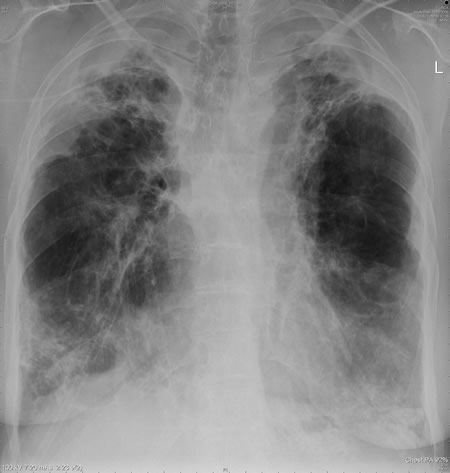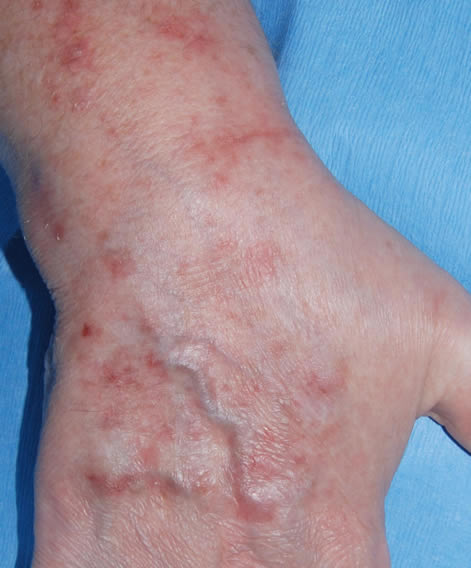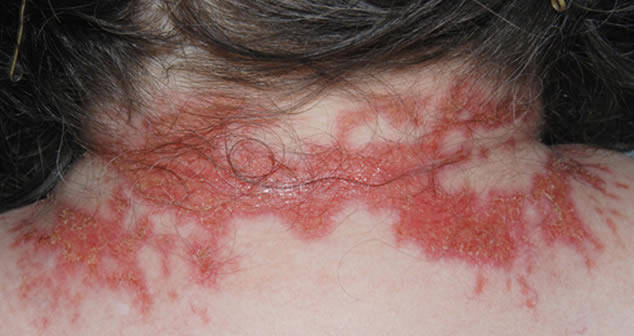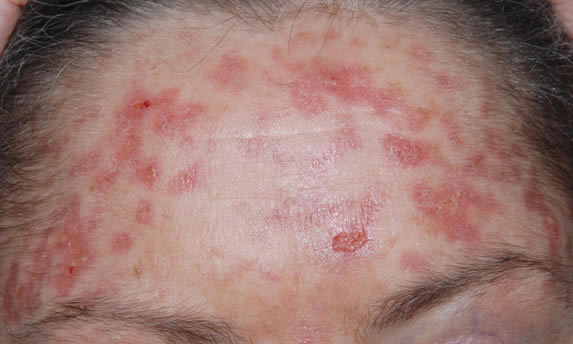Date: 26 November 2013
This patient with ABPA and chronic cavitary pulmonary aspergillosis has been stabilized on voriconazole treatment for >5 years. She had a degree of photosensitivity most of that time, noticed early in the course of voriconazole treatment. She is oxygen and wheelchair dependent and doesn’t go outside very much, so most of her light exposure has been indoor light. She developed rough scaly patches over her face, neck and lower arms. Dermatological review indicated multiple solar keratoses”. Skin biopsy from the right forearm confirmed this clinical diagnosis – “skin showing hyperkeratosis with a little parakeratosis and acanthosis. The keratinocytes have a glassy appearance but show nuclear atypia with dyskeratotic cells, and occasional suprabasal mitoses. The intraepidermal sweat ducts are spared. Appearances suggest an actinic keratosis with moderate to severe dysplasia.” These features are characteristic of a low grade premalignant change.
She was treated with local 5-fluorouracil cream (Efudix) (3 cycles) to the affected lesions. These photos were taken at the apogee of inflammation. The inflammation resolved after discontinuing the cream. This reaction is expected with application of this mild chemotherapy agent. Alternative or supplementary treatments include cryotherapy, curettage and cautery, if necessary. Following treatment her skin was much softer and considerably improved. Voriconazole has been stopped, and posaconazole substituted.
Copyright:
DW Denning and JE Ferguson, University Hospital of South Manchester. 22/07/08
Notes: n/a
Images library
-
Title
Legend
-
Pulmonary aspergillosis (Grocott) (cow 2). Serial section of the lesion previously described for cow 2 stained by Grocott. Aspergillus spp. and Actinomyces pyogenes were cultured from the lesions.
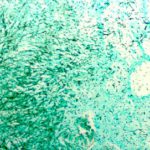
-
Pulmonary aspergillosis (cow 2). Taken from the edge of a lesion, as described in the previous image for cow 2.
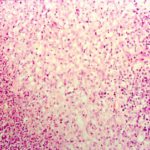
-
Pulmonary aspergillosis (cow 2). Section of lung from a 2 year old cow with weight loss and anorexia since calving. On necropsy examination, multiple firm masses were identified throughout the lungs. These were cavitating in nature, with a necrotic centre and peripheral fibrosis. Both this section and the following one are taken from the edge of such a lesion and demonstrate the pyogranulomatous inflammatory response.
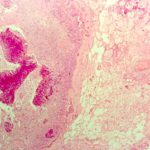
-
Guttural pouch aspergillus (PAS) (horse TW). Serial section of previous slide for horse TW stained by PAS reveals the presence of fungal hyphae within the inflammatory tissue. Aspergillus spp. is the likely cause of equine guttural pouch mycosis.
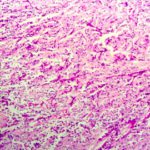
-
Guttural pouch aspergillosis (horse TW). Section of the wall of the guttural pouch from an 8 year old, neutered male horse with recurrent right-sided epistaxis of 10 days duration. Endoscopic examination confirmed the origin of the blood to be the guttural pouch and the right internal carotid artery was ligated surgically. Necropsy examination revealed an extensive ruptured aneurysm of this vessel and guttural pouch mycosis. The section reveals necrosis and chronic inflammatory infiltration of guttural pouc

-
Pulmonary aspergillosis. Section of lung from a 6 year old, Holstein cow with mycotic pneumonia attributed to Aspergillus spp.
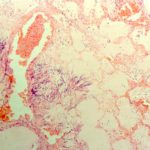
-
Meningitis (dog R). Grocott-stained serial section of the previous slide for dog R reveals the presence of fungal material at the centre of each microgranuloma. These lesions were not cultured, but Aspergillus spp. was identified by immunohistochemical examination using a panel of specific antisera. There was no evidence of systemic involvement in this dog.
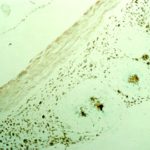
-
Aspergillus meningitis (dog R). Section of spinal meninges from a 4 year old, neutered female German shepherd dog with multiple discospondylitis involving T1-2, T6-7, T10-11 and L5-6. There are a series of coalescing microgranulomas associated with meninges at each site.
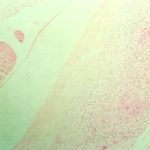
-
Pulmonary aspergillosis (cat T). Section of lung from a young adult, female domestic short haired cat. This was one of seven unvaccinated farm cats that died over a 12 month period. At necropsy examination there was diffuse pulmonary consolidation with scattered abscessation. Aspergillus spp. was cultured from these lesions. The cat also had histopathological evidence of lymph node atrophy, a change that may be attributed to feline immunodeficiency virus (FIV) infection.


